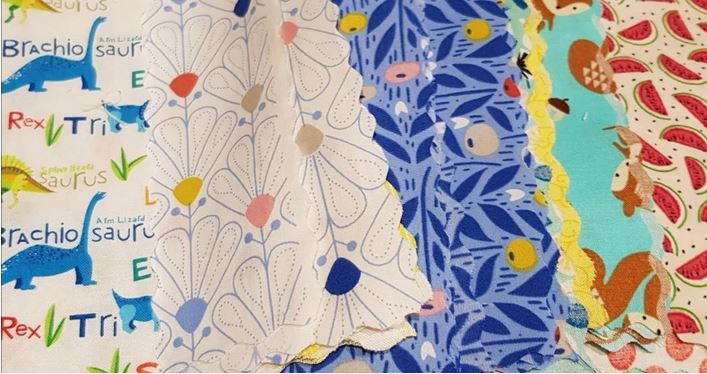Introduction to Saur Fabric
Saur fabric is a hidden gem in the world of textiles, waiting to elevate your next project. Whether you’re crafting a stunning garment or designing an inviting interior, the right fabric can make all the difference. With its rich textures and versatile qualities, Saur fabric has gained popularity among designers and DIY enthusiasts alike. But with various types available, how do you choose the one that fits your vision? Let’s embark on this journey together as we navigate through the enchanting realm of Saur fabrics and discover what makes each type unique!
Types of Saur Fabric: Velvet, Wool, Linen, and Silk
Saur fabric comes in various types, each offering distinct textures and aesthetics. Velvet is known for its contented feel and rich influx. It adds an elegant touch to any project, making it perfect for upholstery or drapery.
Wool, on the other hand, brings warmth and durability. It’s an excellent choice for clothing or blankets that require both comfort and resilience against wear.
Linen stands out with its breathable qualities. This makes it ideal for summer garments or lightweight home décor items. Its natural texture gives a relaxed vibe to any setting.
Silk exudes sophistication with its smooth surface and luster. Often used in high-end fashion pieces, silk drapes beautifully while providing a touch of glamour to your creations.
Each type holds unique benefits that can elevate your projects significantly!
Factors to Consider When Choosing Saur Fabric
Choosing the right Saur fabric involves several important factors. First, consider the project’s purpose. Will it be used for clothing, upholstery, or decorative accents? Each application may require different characteristics from the fabric.
Next, think about texture and feel. Some fabrics are soft and plush while others are more structured. Your choice will impact both aesthetics and comfort.
Color is another critical aspect. Ensure that your selected hue aligns with your design vision and existing decor.
Don’t forget about weight. Heavier fabrics can provide durability but may not drape as well as lighter options.
Budget plays a significant role in decision-making. High-quality materials often come at a higher price point but can offer better longevity and performance over time. Evaluate what fits best within your financial plan without compromising on quality.

Understanding the Durability and Maintenance of Different Saur Fabrics
When selecting Saur fabric, durability is a key consideration. Each type offers unique properties that dictate how well it withstands wear and tear.
Velvet has a luxurious feel but can be prone to crushing. Proper maintenance involves regular brushing to keep its texture looking fresh.
Wool boasts excellent resilience, making it perfect for upholstery or clothing. It’s naturally resistant to stains and odors, requiring minimal care beyond occasional dry cleaning.
Linen is breathable and strong but wrinkles easily. Regular ironing keeps it crisp, ensuring your project maintains an elegant appearance.
Silk exudes elegance yet demands careful handling. Avoid excessive sunlight exposure to prevent fading and follow specific washing instructions for longevity.
Understanding these characteristics helps ensure your chosen fabric will endure while maintaining its beauty over time.
Matching Your Project with the Appropriate Saur Fabric
When selecting Saur fabric, consider the project’s purpose. A cozy throw for chilly evenings calls for warm wool or plush velvet.
For a breezy summer dress, lightweight linen is ideal. Its breathability ensures you stay cool while looking chic.
If you’re crafting something elegant, silk shines in sophistication. It drapes beautifully and elevates any design with its luxurious feel.
Think about color and pattern too. Vibrant hues can energize a room or outfit, while subtle tones offer versatility.
Don’t forget to match the fabric’s texture to your vision—smooth finishes can create a polished look, whereas textured fabrics add depth and interest. Your choice will significantly impact the overall aesthetic of your project.
Tips for Working with Saur Fabric
When working with Saur fabric, preparation is key. Always pre-wash your fabric to prevent any surprises later on. This helps in getting rid of excess dye and ensures the material shrinks before you start sewing.
A precise edge can significantly impact the final look of your project. Consider using weights instead of pins to avoid damaging delicate fabrics like silk.
Sew slowly and steadily, especially if you’re dealing with heavier materials like wool or velvet. Patience will pay off in ensuring even seams.
Press your seams carefully as you go along. Different types of Saur fabric respond differently to heat, so check the manufacturer’s recommendations beforehand.
Consider finishing edges properly to avoid fraying over time. This little step makes a big difference in durability and appearance.
Conclusion:
Choosing the right Saur fabric for your project can seem overwhelming, but it doesn’t have to be. By understanding the different types like velvet, wool, linen, and silk you can better assess what suits your needs. Consider factors such as durability, maintenance requirements, and how each fabric matches with your design vision.
Remember that working with Saur fabric also requires some tips and tricks to ensure you achieve a beautiful finish. Whether you’re creating upholstery or crafting garments, the right choice will elevate your project significantly.
Take time to research and explore options that resonate with you. The perfect Saur fabric is waiting to bring your creative ideas to life.
